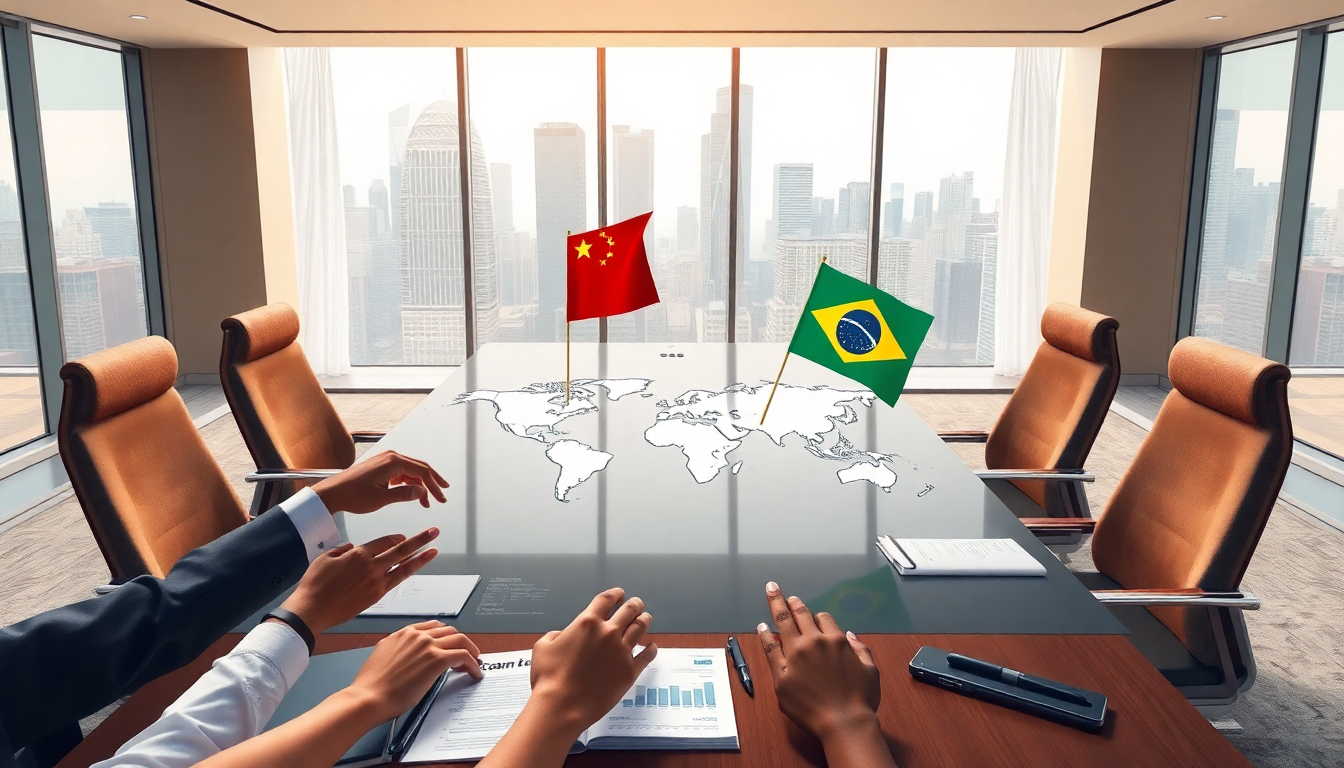Table of Contents
The relationship between China and Brazil has hit a remarkable milestone, marked by cooperation and support in the face of external pressures. Recently, Chinese Foreign Minister Wang Yi and Brazilian Foreign Minister Mauro Vieira chatted about how their bilateral ties are currently at their ‘best in history.’ But what does this really mean for both countries, especially with the shifting sands of global trade dynamics and the unilateral actions of the United States looming over them?
The Current State of China-Brazil Relations
In a recent phone call, Minister Wang made it clear that China is dedicated to working closely with Brazil to tackle what he called ‘unilateralism and bullying.’ This statement sheds light on the rising tensions in global trade, especially after hefty tariffs were slapped on Brazilian goods, like coffee, during the Trump administration.
With Brazil weighing its options for retaliation, strengthening ties with China becomes essential for maintaining economic stability.
Things have really picked up, particularly with President Luiz Inácio Lula da Silva at the helm in Brazil. His administration is eager to deepen connections with China, and direct communication between the two leaders is all about building a community with a shared future, emphasizing mutual trust and collaboration.
This strategic alignment is especially vital as both countries strive to elevate the interests of developing nations within the BRICS framework, which also includes India and Russia.
Trade Dynamics and Economic Implications
Did you know that China has now become Brazil’s largest trading partner, surpassing the United States? This shift highlights the growing economic interdependence between the two nations, particularly in the agricultural sector.
Brazil’s significant soybean exports to China are a clear indication of this reliance, as China, the world’s largest consumer of soybeans, depends heavily on Brazilian agricultural products for its food security.
As China ramps up its diplomatic and economic efforts in South America, the US’s historical influence is facing some serious challenges.
Initiatives like the Belt and Road Initiative, which many Latin American countries have joined, demonstrate China’s strategy to strengthen its economic presence. As Brazil navigates its trading relationship with the US, the partnership with China becomes even more critical for ensuring economic resilience.
Future Outlook and Strategic Considerations
Looking ahead, as the global economic landscape continues to shift, the strategic partnership between China and Brazil is set to deepen. The ongoing trade tensions with the US present both opportunities and challenges for Brazil as it aims to diversify its economic ties. Imagine the possibilities of coordinated responses between Brazil, China, and India against punitive US measures—this could signal a major shift in global trade dynamics.
Brazil’s engagement with China is not just about tackling immediate trade concerns; it also holds the key to fostering long-term economic growth. By leveraging their respective strengths, both countries could see significant opportunities for increased investment and collaboration in various sectors, including technology and infrastructure.
In conclusion, the evolution of China-Brazil relations represents a pivotal moment in the realm of global trade. As both nations work to enhance their partnership, the ripple effects of their collaboration could extend far beyond their borders, reshaping the landscape of international relations among emerging economies. So, as these two giants continue to strengthen their ties, one can’t help but wonder: what does the future hold for global trade? Will we see a more interconnected world, or will tensions continue to rise?





